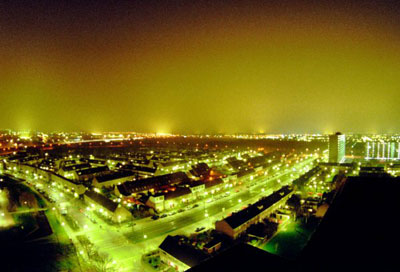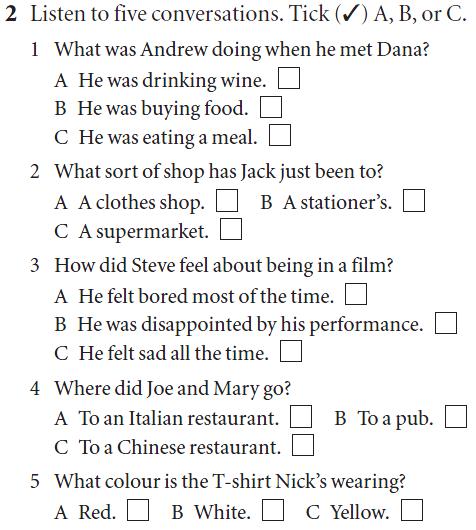|
A |
After hours of driving south in the
pitch-black darkness of the Nevada desert, a dome of hazy gold
suddenly appears on the horizon. Soon, a road sign confirms the
obvious: Las Vegas 30 miles. Looking skyward, you notice that the
Big Dipper is harder to find than it was an hour ago. |
|
B |
Light pollution—the artificial
light that illuminates more than its intended target area—has become
a problem of increasing concern across the country over the past 15
years. In the suburbs, where over-lit shopping mall parking lots are
the norm, only 200 of the Milky Way’s 2,500 stars are visible on a
clear night. Even fewer can be seen from large cities. In almost
every town, big and small, street lights beam just as much light up
and out as they do down, illuminating much more than just the
street. Almost 50 percent of the light emanating from street lamps
misses its intended target, and billboards, shopping centers,
private homes and skyscrapers are similarly over-illuminated. |
|
C |
America has become so bright that
in a satellite image of the United States at night, the outline of
the country is visible from its lights alone. The major cities are
all there, in bright clusters: New York, Boston, Miami, Houston, Los
Angeles, Seattle, Chicago—and, of course, Las Vegas. Mark Adams,
superintendent of the McDonald Observatory in west Texas, says that
the very fact that city lights are visible from on high is proof of
their wastefulness. “When you’re up in an airplane, all that light
you see on the ground from the city is wasted. It’s going up into
the night sky. That’s why you can see it.” |
|
D |
But don’t we need all those lights
to ensure our safety? The answer from light engineers, light
pollution control advocates and astronomers is an emphatic “no.”
Elizabeth Alvarez of the International Dark Sky Association (IDA), a
nonprofit organization in Tucson, Arizona, says that overly bright
security lights can actually force neighbors to close the shutters,
which means that if any criminal activity does occur on the street,
no one will see it. And the old assumption that bright lights deter
crime appears to have been a false one: A new Department of Justice
report concludes that there is no documented correlation between the
level of lighting and the level of crime in an area. And contrary to
popular belief, more crimes occur in broad daylight than at night. |
|
E |
For drivers, light can actually
create a safety hazard. Glaring lights can temporarily blind
drivers, increasing the likelihood of an accident. To help prevent
such accidents, some cities and states prohibit the use of lights
that impair nighttime vision. For instance, New Hampshire law
forbids the use of “any light along a highway so positioned as to
blind or dazzle the vision of travelers on the adjacent highway.” |
|
|
F |
Badly designed lighting can pose a
threat to wildlife as well as people. Newly hatched turtles in
Florida move toward beach lights instead of the more muted silver
shimmer of the ocean. Migrating birds, confused by lights on
skyscrapers, broadcast towers and lighthouses, are injured,
sometimes fatally, after colliding with high, lighted structures.
And light pollution harms air quality as well: Because most of the
country’s power plants are still powered by fossil fuels, more light
means more air pollution. |
|
G |
So what can be done? Tucson,
Arizona is taking back the night. The city has one of the best
lighting ordinances in the country, and, not coincidentally, the
highest concentration of observatories in the world. Kitt Peak
National Optical Astronomy Observatory has 24 telescopes aimed
skyward around the city’s perimeter, and its cadre of astronomers
needs a dark sky to work with. |
|
H |
For a while, that darkness was
threatened. “We were totally losing the night sky,” Jim Singleton of
Tucson’s Lighting Committee told Tulsa, Oklahoma’s KOTV last March.
Now, after retrofitting inefficient mercury lighting with low-sodium
lights that block light from “trespassing” into unwanted areas like
bedroom windows, and by doing away with some unnecessary lights
altogether, the city is softly glowing rather than brightly beaming.
The same thing is happening in a handful of other states, including
Texas, which just passed a light pollution bill last summer.
“Astronomers can get what they need at the same time that citizens
get what they need: safety, security and good visibility at night,”
says McDonald Observatory’s Mark Adams, who provided testimony at
the hearings for the bill. |
|
I |
And in the long run, everyone
benefits from reduced energy costs. Wasted energy from inefficient
lighting costs us between $1 and $2 billion a year, according to
IDA. The city of San Diego, which installed new, high-efficiency
street lights after passing a light pollution law in 1985, now saves
about $3 million a year in energy costs. |
|
J |
Legislation isn’t the only answer
to light pollution problems. Brian Greer, Central Ohio
representative for the Ohio Light Pollution Advisory Council, says
that education is just as important, if not more so. “There are some
special situations where regulation is the only fix,” he says. “But
the vast majority of bad lighting is simply the result of not
knowing any better.” Simple actions like replacing old bulbs and
fixtures with more efficient and better-designed ones can make a big
difference in preserving the night sky. |
|
|
*The Big Dipper: a group of seven
bright stars visible in the Northern Hemisphere. |
|





